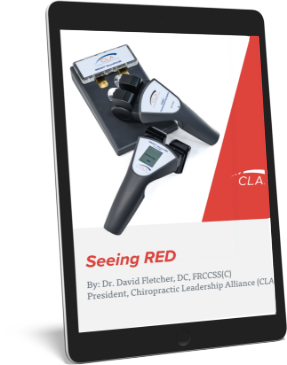By Dr. Christopher Kent
Analysis of posture provides important information concerning vertebral subluxation. Posture may be defined as distribution of body mass in relation to gravity over a base of support. According to Kuchera [1], distribution of weight over the base of support depends on the following:
 |
Energy requirements for homeostasis; |
 |
Integrity of musculoligamentous structures; and |
 |
Compensation that structures at or below the base of the skull have on the visual and/or balance functions of the body. |
Kuchera further wrote, “Postural homeostatic lessons are learned gradually by the central nervous system from visual and proprioceptive input as the individual grows and develops… The nature of postural compensation is to react to a disturbance of posture with change throughout the remaining somatic tissues.”
Postural changes are mediated by receptors that monitor the dynamics of the internal and external environment, and the relationship of the individual with the environment. The receptor systems that may contribute to postural alteration include:
1. Vestibular apparatus
2. Vision
3. Joint mechanorecptors
4. Disc mechanorecptors
5. Golgi receptors
If vertebral subluxation results in aberrant afferent input to the CNS, inappropriate motor responses may cause postural aberrations.
Historically, aberrant posture has been associated with a variety of health-related conditions. Jenness [2] cites three studies relating posture to general health. Kuhns [3] suggested that poor posture was associated with many pathological processes, and that good posture could prevent disease processes. Thompson [4] suggested that many conditions could be “cured” by postural correction. Garner [5] proposed that proper posture aids in “minimizing fatigue” and “building resistance to infection.”
More recent writings have related postural aberrations to increased susceptibility to sports-related injuries. [6,7,8,9,10] Alterations in posture have also been associated with adverse mechanical tension on the spinal cord [11] and vertebral subluxation [12].
Health is dependent upon maintaining appropriate tone in the nervous system. As D.D. Palmer explained: “Life is action governed by intelligence. Intelligent life, the soul, depends upon the execution of functions. Functions performed by normal energy is health. Disease is the result of the performance of functions above or below a normal degree of activity. Impulses properly transmitted through nerves, result in functions being normally performed, a condition which results in health.” [13]
The ability to maintain tone requires a nervous system free of interference. Restoration of tone is dependent upon correction of vertebral subluxations. Incomplete as this summary may be, it strongly suggests that aberrant posture may adversely affect health-related quality-of-life.
References
1. Kuchera ML and Kuchera WA: “General postural considerations.” In: “Foundations for Osteopathic Medicine.” Williams and Wilkins, Baltimore, 1997.
2. Jenness ME: “The role of thermography and postural measurement in structural diagnosis.” In: Goldstein M (ed): “The Research Status of Spinal Manipulative Therapy.” DHEW Publication No. (NIH) 76-998. 1975.
3. Kuhns JG: “Diseases of posture.” Clin Orthop 1962;25:64.
4. Thompson J: “The erect posture.” Lancet 1922 (Jan. 14) 1:107.
5. Garner JR: “Posture and fatigue.” International Journal of Medicine and Surgery 1932 (Jan);45:27.
6. Watson AWS: “Sports injuries related to flexibility, posture, acceleration, clinical defects, and previous injury, in high-level players of body contact sports.” Int J Sports Med 2001;22:222.
7. Shambaugh JP, Klein A, Herbert JH: “Structural measures as predictors of sports injury in basketball players.” Med Sci Sports Exercise 1991;23:522.
8. Powers CM, Maffucci R, Hampton S: “Rearfoot posture in subjects with patello-femoral pain.” J Orth Phys Ther 1995;22:155.
9. Watson AWS: “Sports injuries in footballers related to defects in posture and body mechanics.” J Sports Phys Med Fitness 1995;35:289.
10. Cowan DN, Jones BH, Frykman PN: “Lower limb morphology and risk overuse injury among male infantry trainees.” Am J Sports Med 1996;24:945.
11. Breig A: “Adverse mechanical tension in the central nervous system.” New York, Wiley and Sons, 1978.
12. Epstein D: “Network Spinal Analysis: a system of health care delivery within the subluxation-based chiropractic model.” Journal of Vertebral Subluxation Research 1996; 1(1):51.
13. Palmer DD: “Text-book of the Science, Art and Philosophy of Chiropractic for Students and Practitioners.” Portland Printing House Company. Portland, OR. 1910. Page 661.




























































